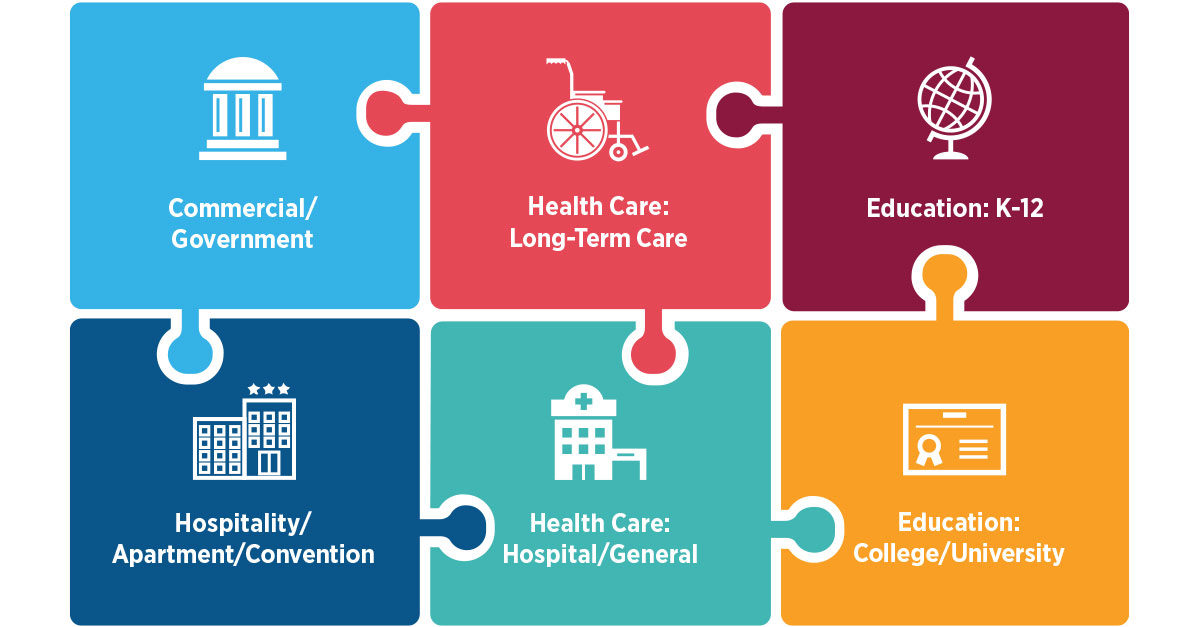Why Facility Management is Vital for Asset Durability
Wiki Article
Trick Trends Shaping the Future of Facility Monitoring in 2024
As we look in advance to 2024, the landscape of center administration is positioned for substantial improvement, driven by a number of vital trends. The assimilation of wise structure modern technologies and a change towards data-driven decision-making promise to enhance operational efficiency while focusing on sustainability in practice.Smart Structure Technologies

Smart building innovations include a large selection of systems, including smart illumination, a/c controls, and protection systems. By integrating these systems, facility managers can keep an eye on and readjust criteria in real-time, bring about substantial decreases in energy waste and functional prices. For example, clever sensors can discover tenancy degrees and readjust lighting and temperature accordingly, making sure that energy is only made use of when required.
Furthermore, these innovations promote enhanced information collection, enabling companies to track use patterns and identify possibilities for further renovations. The implementation of wise building modern technologies not only adds to sustainability objectives but additionally produces healthier workplace that can improve staff member performance and fulfillment.
As we relocate right into 2024, the adoption of clever building modern technologies will likely increase, reflecting a broader change towards more smart, responsive, and sustainable center monitoring techniques.
Data-Driven Choice Making
Increasingly, companies are leveraging data-driven decision making to boost facility administration practices. By harnessing data analytics, facility supervisors can acquire actionable insights that significantly boost operational performance and resource allotment. The integration of advanced technologies, such as IoT sensors and real-time surveillance systems, enables the collection of substantial amounts of data on structure efficiency, tenancy prices, and energy consumption.This wealth of details enables facility managers to determine trends, predict maintenance demands, and proactively address concerns before they rise. For instance, predictive analytics can forecast devices failures, minimizing downtime and repair work expenses. In addition, data visualization tools facilitate far better communication among stakeholders, making certain that notified decisions are made collaboratively.
In addition, data-driven techniques improve critical preparation by making it possible for facility managers to examine the performance of current methods and make informed selections pertaining to investments in technology or facilities. As organizations progressively focus on functional quality, data-driven choice making is poised to become a foundation of effective center monitoring approaches in 2024 and past. Eventually, the capacity to utilize data efficiently will empower organizations to create much more reliable, effective, and durable facilities.
Sustainability and Eco-friendly Practices
The focus on data-driven decision making naturally straightens with the expanding emphasis on sustainability and eco-friendly techniques within facility management. As companies increasingly prioritize environmental duty, facility managers are leveraging analytics to optimize resource usage, lower waste, and lessen carbon impacts. This calculated method makes it possible for the integration of energy-efficient systems, such as LED illumination, smart HVAC controls, and sustainable power sources right into center procedures.Furthermore, the application of sustainable techniques expands beyond power usage. Center supervisors are adopting environmentally friendly materials and advertising reusing efforts to develop a round economic situation within their facilities. This not only enhances the environmental profile of the organization yet additionally fosters a culture of sustainability among workers.
Compliance with ecological laws is another essential facet driving the fostering of eco-friendly techniques. By utilizing information analytics, facility supervisors can check compliance metrics and determine locations for enhancement, guaranteeing adherence to international and neighborhood sustainability criteria.
Crossbreed Work Models
A significant shift in the direction of crossbreed work versions is reshaping the landscape of facility administration in 2024. This standard incorporates in-office and remote job, demanding a reevaluation of room utilization, resource allowance, and employee engagement techniques. Organizations are progressively identifying the value of versatile work spaces that accommodate varied demands and preferences.Center managers should adjust by implementing versatile office layouts that support joint efforts while offering locations for concentrated work. This consists of the assimilation of modern technology to help with smooth interaction and partnership among remote and in-office employees. Smart structure solutions, outfitted with sensing units and analytics, permit real-time monitoring of area use, allowing companies to maximize their atmospheres effectively.
Furthermore, crossbreed work versions stress the need for effective center management that prioritizes employee experience. In significance, the hybrid work model is transforming facility management, motivating a proactive technique to meet the evolving needs of the labor force.
Boosted Owner Health
As companies accept hybrid work versions, an enhanced emphasis on resident wellness is coming to be essential to center administration strategies. Facility Management. This shift recognizes that a satisfied and healthy labor force straight affects efficiency and retention prices. Facility managers are now prioritizing environments that advertise mental and physical wellness, incorporating components such as all-natural illumination, biophilic design, and available wellness resources

Technology plays a vital role in this development. Smart structure systems can monitor ecological variables and adjust setups in real-time, making certain optimum comfort levels - Facility Management. Responses devices, such as tenancy sensing units and employee surveys, allow facility managers to continuously fine-tune wellness campaigns based on occupant requirements.

Conclusion
In 2024, the future of facility monitoring will be dramatically influenced by the assimilation of smart structure modern technologies and data-driven decision-making, cultivating improved operational effectiveness. These trends collectively emphasize the developing landscape of center monitoring in reaction to contemporary challenges and possibilities.Center managers are embracing eco-friendly products and promoting recycling efforts to develop a circular economic climate within their centers.A significant change towards crossbreed work designs is improving the landscape of center management in 2024.Furthermore, crossbreed job designs emphasize the requirement for reliable center management that prioritizes worker experience.As companies welcome hybrid Home Page work versions, an enhanced focus on resident wellness is ending up being important to center monitoring techniques.In 2024, the future of center monitoring will certainly be significantly influenced by the assimilation of wise building technologies and data-driven continue reading this decision-making, promoting enhanced functional efficiency.
Report this wiki page